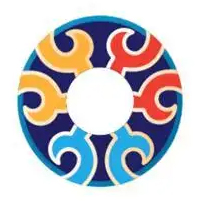Copper Rimmed Cloisonné: an Essential Chinese Art Form - Jingtailan.
Jingtai blue, also known as copper wire enamel on copper, originated in the Yuan Dynasty, and has a history of more than 800 years. It is a kind of metal artwork made of copper as the body, using copper wire to outline the pattern, and enamel as the colorant, and then made through a series of manual processes.
Jingtai blue mainly uses purple copper as the raw material. First, fix the copper wire on the copper body to form different patterns and shapes, and then fill various colors in the small grids. After 108 pure manual processes, it is finally put into the kiln for firing. Because the production process of Jingtai blue is very complicated, and the material used is precious, it has always been used by the royal family.
The production process of Jingtai blue includes cutting and making the body, wire trimming, wire sticking, blue dotting, blue burning, polishing, and gold plating. Each step needs to be handmade, so large-scale production is not possible.
The selection of glaze materials for Jingtai blue is also very particular. Natural minerals such as agate, lapis lazuli, and turquoise are used for refining, including rare glaze materials, which are expensive. These natural pigments are not easy to fade and help to preserve the artifacts for a long time.
Cloisonne has rich and colorful colors. The blue enamel has various shades such as sky blue, sapphire blue, and ordinary blue. There are also various colors such as chicken blood red, purple red, peach red, dark green, grass green, light green, yellow, white, and purple. The glaze is exquisite and stable, with rich colors. Especially the blue enamel, its purity and brightness are very good, giving it a gem-like beauty.
During the Xianfeng and Guangxu periods of the Qing Dynasty, Cloisonne began to be sold as a commodity at home and abroad. Cloisonne won awards twice at the 1904 Chicago World's Fair and the 1905 Panama-Pacific International Exposition.
Today, cloisonné is hailed as the quintessence of Chinese culture. It can be used not only as practical items such as wine utensils, tobacco utensils, powder boxes, vases, and incense burners, but also as high-end crafts. In 2006, the State Council listed cloisonné as the first batch of national intangible cultural heritage for key protection. In recent years, cloisonné has frequently appeared on the international stage and has become a representative of high-end custom-made national gifts, often presented to foreign heads of state and dignitaries. Under the influence of collectors and art institutions at home and abroad, the prices of cloisonné collections have been soaring, with auction prices reaching new highs, even the cloisonné from the Ming and Qing dynasties often sells for tens of millions or billions of yuan.

